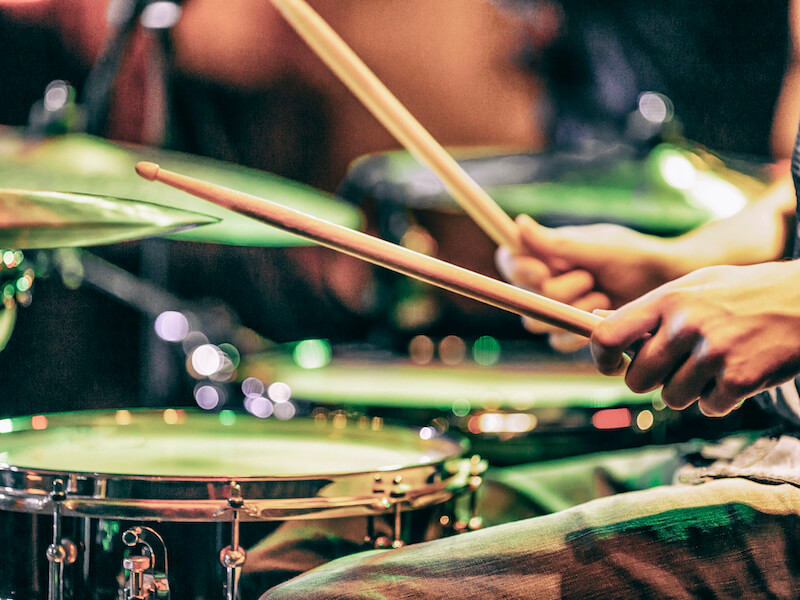
Musicians are awesome! Their songs bring us so much happiness. But music is a lot more powerful when it’s loud, and that can be a hearing hazard. The musicians themselves are at an increased risk of hearing damage since they are exposed to loud music nearly every day.
Whether your income relies on music or not, you’ll still want to be able to hear your favorite songs when you’re pushing 60, 70, or 80. The key to having an extended successful career, for musicians, is protecting their hearing. For the rest of us, hearing protection is the secret to a lifetime of musical enjoyment and enrichment.
Music is surprisingly loud
Most people would say that a jet engine is really loud.
But what about music? People might not be so fast to answer that question if you ask them if a violin or acoustic guitar is loud. Imagine their surprise when they discover the reality: that music is certainly loud! Even classical music can get to relatively loud volumes that can easily harm your hearing.
A violin, for example, can create sounds in excess of 90 dB. A leaf blower is about this noisy. To put that into context, the European Union regulations dictate that any workplace noisier than 85 dB will require the use of ear protection.
And if you’re working with music day in and day out, constant exposure to that kind of volume, particularly without ear protection, can severely harm your hearing over time.
How can you safeguard your hearing?
Okay, now you know that musicians need to protect their hearing (especially if they want to keep on rocking out for years to come). So how can musicians continue to enjoy their music while also preserving their hearing?
Well, here are a couple of easy things musicians can do:
- Take breaks: Your ears are the same as any other part of your body: they can become exhausted and will often benefit from a break. So take regular breaks from the noise. This will help stop your ears from becoming overpowered with sound (and damage). Duration is nearly as relevant as volume with regard to hearing health. Taking breaks can be the difference between just enough stimulation and too much!
- Track your volume: Everybody remembers the old saying “knowledge is power”. So knowing volume levels of sounds around you will help you safeguard your hearing. Tracking the volume on amps and PA systems is one factor. But you can also track day-to-day volume levels of environmental noises using a volume meter app that you can download on your cellphone. If the meter detects volumes above 85dB regularly, you’ll want to address this.
Ear protection is important
Using ear protection is the number one most effective way to protect your hearing. Many musicians are unwilling to use hearing protection because they’re worried it will impact the quality of sound they hear, as well as muting the volume. But depending on what type of hearing protection you use, that might not always be accurate.
- Ear plugs made specifically for musicians: Disposable earplugs are something that’s most likely very familiar to most individuals. They don’t always fit comfortably, but they do reliably stop a lot of sound. They aren’t difficult to find, aren’t expensive, and can be disposed of easily. For musicians, they aren’t the best solution. However, by spending just a little more money, you can purchase high-quality earplugs designed specifically for musicians. These earplugs use cutting-edge manufacturing processes (mostly they’re made out of very distinct materials and are designed to fit comfortably in the ear) to preserve audio fidelity while decreasing the noise you hear by about 20dB. This solution is perfect for musicians who need a light to moderate amount of protection (and who don’t have a ton of money to invest in earplugs, or are likely to lose them).
- Electronic earplugs: The same general functionality found in non-electronic earplugs can also be found in electronic earplugs. Most of the sound will be blocked by the earplug itself. What you hear will instead be piped in by the earplug itself. For individuals who work in really noisy settings and need better control of the volume, these earplugs are ideal.
- In-ear monitors: Most music is electronic now, or at least amplified by electronics. An in-ear monitor takes those electronic signals and transmits them directly to a device placed inside of your ear (called an in-ear monitor). The majority of monitors are little speakers that fit tightly and block out most sound while playing sounds you want to hear at safe volumes. So you regulate the volume level and can hear sound in an accurate and clear way. For musicians who electronically amplify their instruments these in-ear-monitors are the ideal answer.
Safeguard your ears, and protect your career
It’s never too late to take steps to safeguard your hearing, but it’s definitely a good plan to start sooner rather than later. Everybody can safeguard their hearing and future with ear protection solutions for every budget. Remember, ear protection for a musician is an investment in your career. It’s one way to ensure you’ll be making amazing music for years (maybe even decades) to come!
Don’t really know where to begin? Contact us today, we can help!

